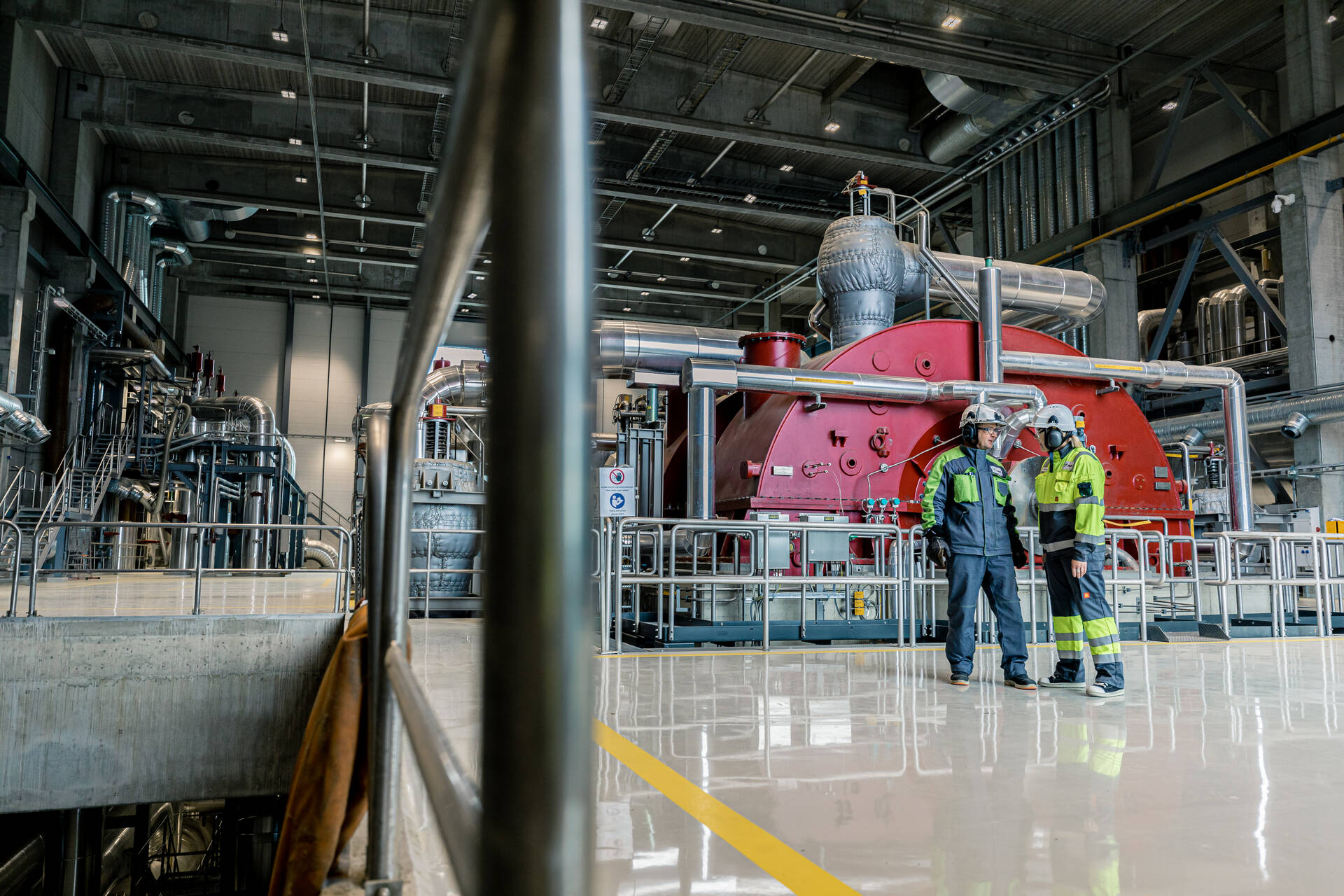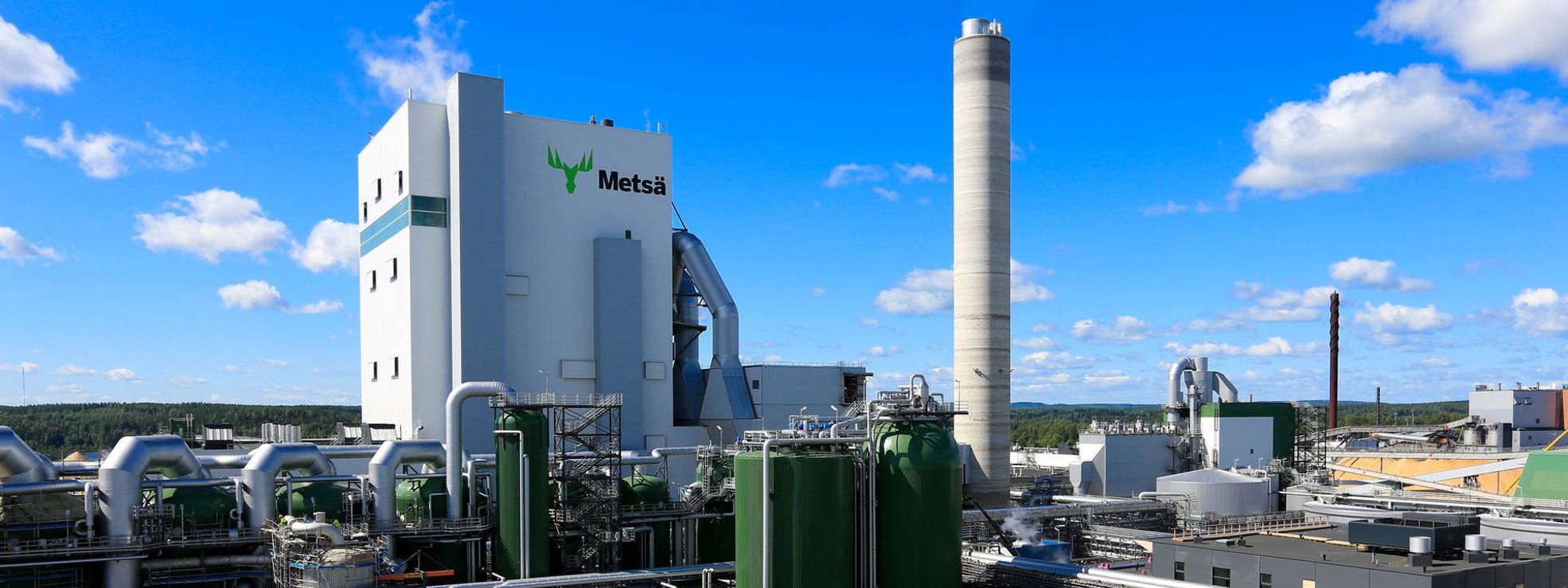Even small actions have a big impact. In fact, nearly half of Metsä Group's energy savings have been achieved without additional investments.
"Our mill personnel are genuinely multiskilled, and our operators and development staff continuously develop energy use in production. We are committed to improving energy efficiency, as demonstrated by our ISO 50001 certification," says Pirita Mikkanen, VP, Energy from Metsä Group.
In 2017–2020, Finnish forest industry achieved good results in the field, thanks to the sector carrying out energy-efficiency measures equivalent to approximately 4.2 TWh. This would be enough for a combustion engine car to circle the globe over 100,000 times. Metsä Group stood for one third of the sector's energy savings in the period.
Learn more about the energy-efficiency measures carried out in Metsä Group.
Joutseno invested in technology
A perfect example of the positive impacts of investments in machinery can be found at our Joutseno BCTMP mill that produces raw material for paperboard. Thanks to the investment, the share of dry matter in the product could be increased. Even a small increase in dry matter has a significant impact on energy efficiency.
"The goal was to obtain energy savings of 15 per cent in the pulp drying process. This could be used, for example, to annually heat 1,500−3,000 standard detached houses*," says Matti Korhonen, Energy and Material Efficiency Manager at Metsä Board.
The efficient use of the revamped machine calls for continuous learning and the optimisation of settings. The goal is to run the machine as energy and production efficiently as possible.
"Our team of operators was involved in the project from the outset. They prepared operating plans for start-up, which were tested and then fine-tuned, based on the results. It was inspiring to see how the new operating method affected the team's commitment. And the work continues," says Miika Sinkko, development engineer.
* Motiva: the annual energy consumption of a standard detached house is approximately 20,000 kWh
Metsä Group's pulp mills among Finland's largest producers of renewable energy
Our pulp mills generates more bioenergy than the mills themselves need. Surplus energy is supplied as electricity to the network, as heat to industrial customers and as district heat to nearby communities. The larger the energy savings and the more efficient the production, the larger the volume of renewable energy supplied to users outside the mill.
The Äänekoski bioproduct mill as well as the Kemi bioproduct mill, to be completed in 2023, have a considerable impact on the group's energy efficiency. The new mill will have an electricity self-sufficiency rate of 250%, and that of the Äänekoski mill is nearly the same. The renewable electricity produced by the mills accounts for around five per cent of Finland's overall electricity production.

Energy use monitored continuously at the LVL and plywood mills
Our LVL and plywood mills, energy efficiency efforts are guided by both the Energy Efficiency Agreement, part of the country's energy and climate strategy, and the company's management system complying with the ISO 50001 standard. The goal of investments is to enhance production and energy use.
"We're part of an energy-intensive industry, which means we must continuously monitor our energy use. For example, we conduct surveys to help us identify potential savings. Small streams make a big river," says Ossi Vaara, Metsä Wood's new development manager, who has been acquainting himself with development projects at the company's mills for a month or so.
Savings can still be achieved in the mills' waste heat recovery. In addition to the production process, attention will also be focused on the mill environment and operating methods in the coming years.
Investments in the energy efficiency of tissue paper production in Mänttä
Our Mänttä tissue paper mill, efforts to enhance the use of steam, gas, water and electricity have continued for years. The results have been good, and the work continues. The mill will take a new leap in energy efficiency with the renewal of one of its paper mills in the summer of 2022. The mill's largest single investment decision will reduce the unit's energy consumption by approximately 15 per cent per tonne.
"In addition to improving energy efficiency, the investment will help us ensure that our customers continue to get high-quality, soft tissue paper in the future. In addition, the machine's life-cycle will increase, and we will be able to ramp up capacity to match demand," says Kari Karttunen, Mill Director in Mänttä.
 Metsä Forest
Metsä Forest
 Metsä Wood
Metsä Wood
 Metsä Fibre
Metsä Fibre
 Metsä Board
Metsä Board
 Metsä Tissue
Metsä Tissue
